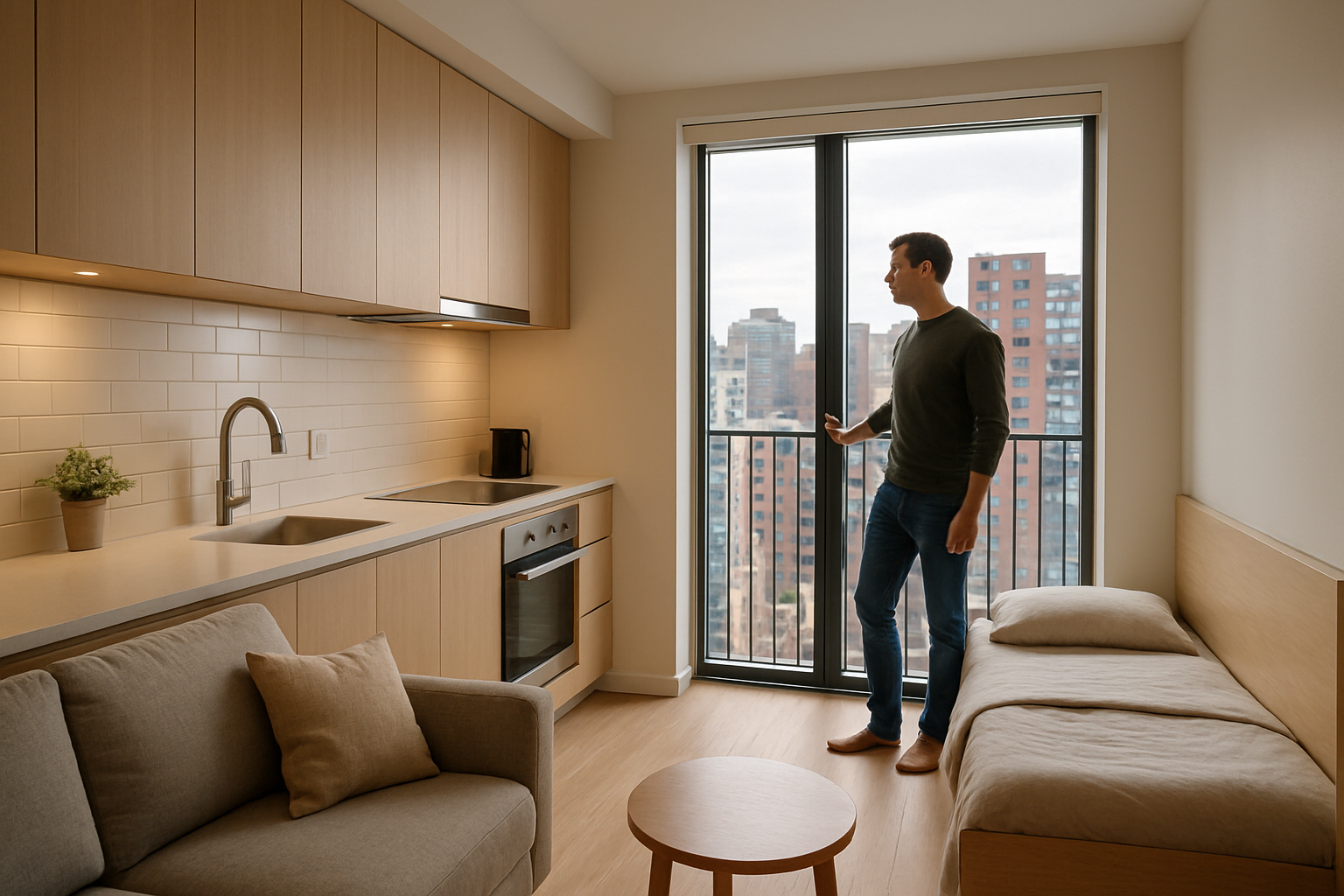Navigating the Rise of Micro-Apartments in Urban Real Estate
The urban landscape is evolving, and with it, the concept of home. As cities grapple with population density and affordability issues, a new trend is emerging in the real estate market: micro-apartments. These compact living spaces, typically under 400 square feet, are reshaping urban housing and challenging traditional notions of what constitutes a comfortable living environment. This shift is not just a passing fad but a response to changing demographics, economic pressures, and lifestyle preferences in major metropolitan areas.

Historical Context and Urban Development
The roots of micro-living can be traced back to the early 20th century when urbanization led to the creation of single-room occupancy hotels and boarding houses. However, the modern micro-apartment movement gained momentum in the aftermath of the 2008 financial crisis. As young professionals flocked to cities for job opportunities, they encountered sky-high rents and a shortage of affordable housing options. Developers and city planners began exploring micro-apartments as a solution to these urban housing challenges.
Economic Drivers and Market Demand
The appeal of micro-apartments lies in their affordability and prime locations. In cities where the average rent for a studio apartment can exceed $2,000 per month, micro-units offer a more budget-friendly alternative without sacrificing proximity to urban amenities. This cost-effectiveness is particularly attractive to millennials and young professionals who prioritize experiences and location over square footage. Additionally, the rise of the gig economy and remote work has reduced the need for spacious home offices, making compact living more viable for a broader demographic.
Design Innovations and Space Optimization
Architects and interior designers are at the forefront of the micro-apartment revolution, developing ingenious solutions to make small spaces feel larger and more livable. Foldable furniture, hidden storage compartments, and modular designs are just a few of the innovations being implemented. Some micro-apartments feature movable walls or Murphy beds that transform living areas into bedrooms at night. High ceilings and large windows are also common, creating an illusion of spaciousness and bringing in natural light to combat feelings of claustrophobia.
Impact on Urban Planning and Infrastructure
The proliferation of micro-apartments is reshaping urban landscapes and challenging traditional zoning laws. Many cities are revising their building codes to accommodate these smaller units, recognizing their potential to alleviate housing shortages. However, this trend also raises concerns about population density and strain on existing infrastructure. Urban planners are grappling with questions about how to ensure adequate public spaces, transportation, and services to support the increased concentration of residents in micro-apartment developments.
Social and Psychological Considerations
While micro-apartments offer a practical solution to urban housing issues, they also spark debates about quality of life and mental health. Critics argue that extremely small living spaces can lead to feelings of confinement and isolation. Proponents, however, point to the communal amenities often included in micro-apartment complexes—such as shared lounges, kitchens, and workout facilities—as fostering a sense of community. The psychological impact of micro-living is an ongoing area of study, with researchers exploring how design elements can mitigate potential negative effects of confined spaces.
Investment Potential and Market Outlook
For real estate investors, micro-apartments present an intriguing opportunity. The higher price per square foot compared to traditional apartments can translate to better returns, especially in prime urban locations. However, the long-term investment potential depends on various factors, including regulatory environment, demographic shifts, and evolving work patterns. As remote work becomes more prevalent, some experts question whether the demand for urban micro-units will persist or if there will be a shift towards slightly larger spaces that can accommodate home offices.
Challenges and Regulatory Hurdles
Despite their growing popularity, micro-apartments face several challenges. Building codes in many cities still have minimum size requirements that preclude extremely small units. There are also concerns about the potential for overcrowding and the impact on neighborhood character. Some local governments have imposed restrictions on micro-apartment developments to prevent the displacement of families or to maintain a diverse housing stock. Navigating these regulatory hurdles requires developers to work closely with city officials and community stakeholders.
The Future of Urban Living
As cities continue to grow and evolve, micro-apartments are likely to play an increasingly significant role in urban housing strategies. The concept is already expanding beyond young singles to include senior housing and even family-oriented micro-units. Future developments may incorporate more advanced technology, such as AI-powered home systems that further optimize small living spaces. The success of micro-apartments could also influence broader trends in housing design, emphasizing efficiency and functionality across various property types.
In conclusion, the rise of micro-apartments represents a significant shift in urban real estate, reflecting changing societal values, economic realities, and technological capabilities. While not without challenges, this trend offers innovative solutions to pressing housing issues in major cities. As the concept continues to evolve, it will undoubtedly shape the future of urban living, influencing everything from architectural design to city planning policies. For investors, developers, and urban dwellers alike, understanding the micro-apartment phenomenon is crucial for navigating the complexities of modern real estate markets.





